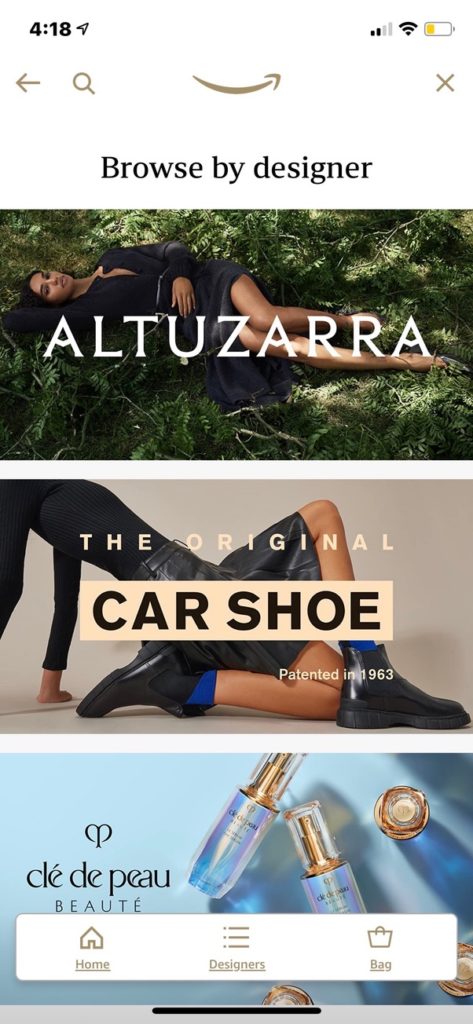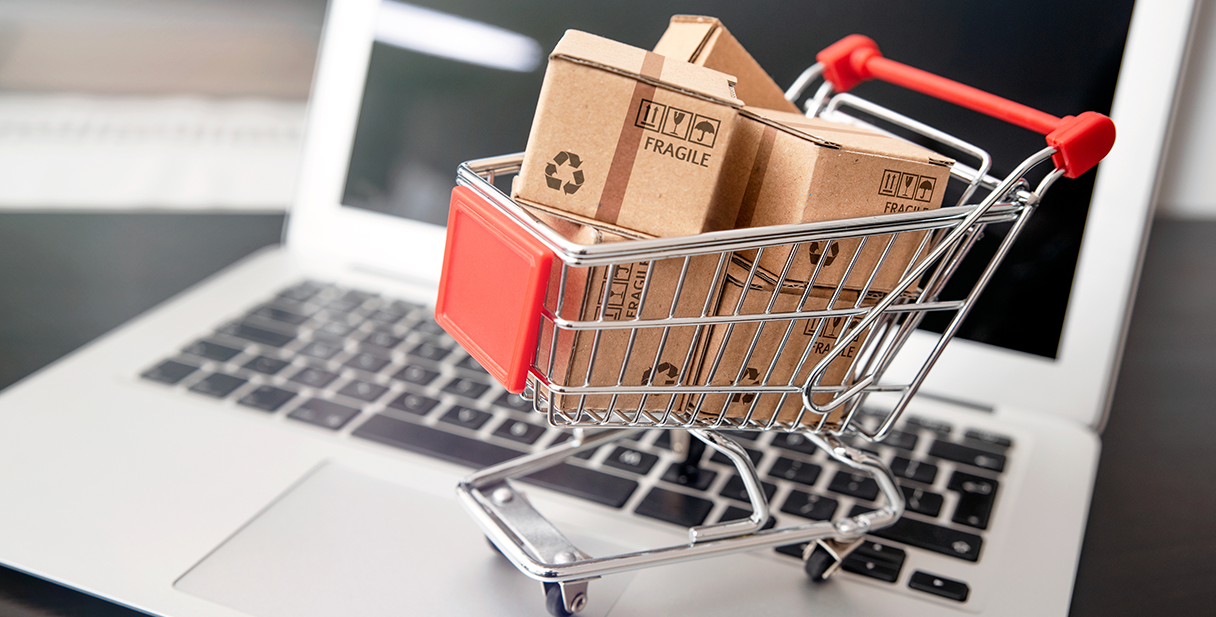5 Predictions for Ecommerce in 2021
January 16, 2021 Jenna Craig
While 2020 was pretty rough for retailers, FBA Sellers soared in most categories (unfortunately, categories like auto and travel suffered tremendously). Regardless of background or industry, we can agree things didn’t go as planned last year. However, an overall growth of ecommerce and international expansion of FBA availability did come true even despite the upsets caused by COVID-19.
We’ve pooled our most valuable resources (Thrashers themselves) to put down their predictions for what five things FBA and ecommerce businesses will see in 2021.

1. Expanded video content
We’re confident about in 2021 that Amazon will put more emphasis on Amazon Live and other video content. Amazon Live has been around for a while, but this year Amazon Accelerate had several keynotes hyping-up Amazon’s QVC-like streaming platform for sellers. We already know Amazon’s algorithm gives preferential ranking to listings with video content (more on that here).
In 2020, we also saw a lot of celebrity stores and a heightened presence on social media. In 2021, we’ll see even more as Amazon is motivated by up and coming competitors in Facebook and Instagram shopping as well as Gen-Z’s beloved TikTok, who partnered with Walmart and Shopify to pilot livestream shopping events. To compete, Amazon will have to expand celebrity content, carve a more natural path for influencers, and dive deeper into third party content sales.
Thrasio’s Co-CEO, Carlos Cashman, predicts Amazon will go about this in one of two ways, “They’ll either expand Live organically or move to acquire an existing company to meet the compete with Instagram and Facebook.”
Live ecommerce shopping is the way of the future. Forbes reported livestream shopping accounted for 9% of China’s total ecommerce revenues in 2019. With infinite products to push and plenty of FBA Sellers willing to pay up for the sales, Amazon will continue to dominate—just within another medium.
2. Facebook & Instagram shopping will be huge
We mentioned Facebook and Instagram above, but in just how influential we think Instagram and Facebook will be in 2021, they deserve their own spot on the list.
Instagram’s highly visual platform (something Amazon never emphasizes) is perfect for D2C brands. Think about the marketing of items that need to convey a luxury feel—nearly impossible to do on a white background. These Instagram shops will eat up (and, more importantly, grow) Etsy shops, Shopify, and D2C brands like Harrys Razors did. Amazon’s army of hungry FBA sellers will make sure Amazon still dominates online sales, but not without making some changes.
3. Higher quality offerings
Amazon has been the proud purveyor of affordable odds and ends for years, some of which are flimsy and cheap. Affiliate marketing accounts for much of the content on sites like Buzzfeed with articles like “33 Products That’ll Upgrade You Life for Under $25.” The impetus for a lot of these listicles seems to be “there’s a lot of junk online, but this stuff is worth buying.” However, with ecommerce (and Amazon sales) hitting an all-time high in 2020, customers and sellers alike are all too aware of the saturation of cheap products.
Increased customer attention and regulatory scrutiny aren’t going anywhere in 2021, leading to a more quality-focused market. Amazon’s Brand Registry and Project Zero initiatives prove the trend. Brand Registry has been around for a while, and it’s becoming more effective with each update. Brand Registry streamlines any changes or updates on a listing, but to level up as a seller and validate your brand’s quality, you need to unlock Project Zero.
Project Zero launched in 2019 with the sole purpose of removing counterfeiters. However, it’s a self-service removal tool meaning the bad actor’s listing is removed as soon as the report is submitted. No review necessary. To have access to Project Zero, you need to have a certain percentage of accuracy in your reportings reviewed on Brand Registry. As this extra layer of protection for legitimate brands filters out counterfeiters and hijackers, Amazon’s general quality of products should improve naturally. In keeping with their customer-centric philosophy, Amazon wouldn’t emphasize these initiatives if it weren’t important to their customers.
Another proof point of the trend toward higher quality is Amazon’s introduction of Luxury Stores in the fall of 2020. While it didn’t seem like an opportune time for Amazon to enter the luxury market, it was a time when luxury retailers were desperate. Luxury brands like Oscar de la Renta previously marketed on the idea that their brands were inaccessible to the masses, so making their items available on Amazon is a massive shift for the fashion industry and a change for Amazon too.
Within the luxury stores, you can see the small interface changes that deviate from Amazon’s ordinary listings that indicate a slight shift toward better visual marketing. Products on the luxury store listings feature 360º photography and a deviation from the ‘Amazon Bland’ iconography and color palettes. There’s even a serif font. The icons are set in a slightly metallic beige that comes off as sleek rather than cheesy gold. A jaunty shopping ‘bag’ replaces the cart, which would look off-putting in brick-and-mortar luxury stores. The design updates tell of more change coming soon for all sellers.

Screenshot of Amazon Luxury interface on mobile (December 2020)
4. The cost of success will rise
With great luxury often comes great expense. Almost everyone in the space is in agreement that PPC costs will rise. As JungleScout states, “Amazon PPC is an auction, meaning that your cost per click (CPC) is a penny more than what the next seller is willing to pay per customer click for a specific keyword.”
With increased competition among sellers and venture-backed pros like us (sorry), it’s going to make it more challenging for single sellers to compete. In addition to rising costs, there are many nuanced changes in space, mostly due to regulatory compliance scrutiny and the eventual policy changes—not to mention Amazon’s new focus on supply chain management. The lower the IPI score, the more a seller has to pay in FBA fees. Depending on the category, some sellers may not be able to keep up.
However, there is an upside: sellers will see a more liquid market for their businesses and potentially higher average multiples due to the COVID bump.
5. Brexit: the wild card
Brexit has caused a comprehensive compliance lift. For smaller sellers, the time and cost associated with selling in the UK are too costly to keep operating. Many sellers are jumping ship. For non-Amazon sellers, it’ll be even more challenging to do business in the ecommerce market.
Sellers on Amazon UK can use Brand Registry to validate the new compliance aspects, but even so, it’s a giant bear.
It’s likely rollups like us will scoop up a lot of these UK brands, but time will tell how Brexit will affect ecommerce as a whole.
One thing is almost certain – in 2021, Amazon is going to continue its absolute dominance.
 EN
EN  CN
CN DE
DE EN
EN JP
JP

